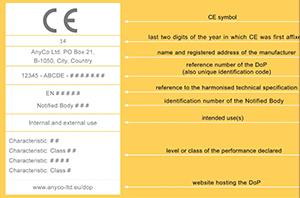
19 November 2024 | Rocburn Ltd
What makes a vent EN 12101-2 certified?
A smoke vent needs to go through and pass a set of rigorous tests as defined in the EN 12101 suite of standards.
In addition to this, as the product is used in construction projects, it also needs to comply with the Construction Products Regulation (CPR) 2013 as well.These regulations require natural smoke ventilation products (NSHEVs) used in construction to be CE / UKCA marked against the EN 12101-2 harmonized standard.
See an example of our EN 12101-2 certified AOV windows.
Since the regulations were introduced, we’ve encountered mixed opinions around the industry as to what constitutes a certified EN 12101-2 smoke vent product, we’ll attempt to clarify some of that here. We wanted to get as close to an official answer to these questions as we could, so we contacted a globally recognised, notified body and test house for their clarification. The same organisations that test smoke vents for their compliance to receive a CE mark!
Given the safety of life nature of smoke ventilation, both the manufacturing process and the product needs to meet a high standard level to receive a CE mark. This level is known as AVCP Level 1 (Assessment and Verification of Constancy of Performance). In comparison simple windows and doors only need to meet EN 14351requirements and are Level 3 on this system.
The key take-away here is that the smoke vent (AOV) itself is a product despite consisting of components (e.g. Actuator motors, window frames), and should have a CE mark of its own. Any CE label applied to the motor component itself is independent.
Below are our answers to some of the common questions we receive on the subject.
Can I just add motors to a window to make it a certified smoke vent?
No, a certified smoke vent in totality is usually purchased as a complete product. It is possible that a manufacturer will sell you a kit comprising of two or more components (frame and motors) that you install on site by following the manufacturer instructions. But the components of this kit must be supplied by the same manufacturer as a single product, otherwise it cannot be CE marked.
Why not?
All components of the product must be placed on the market by the same, single manufacturer. This is defined in the approved guidance for the notified bodies / test houses. If the product does not meet this requirement, it has not been tested and cannot receive a CE mark.
Can I put EN 12101-2 tested motors on an existing window?
Yes, this is called retrofitting, however it’s important to highlight that this won’t result in a CE marked, EN 12101-2 certified vent. There are scenarios such as construction in a conservation area or on listed buildings, that may require you to maintain the existing appearance for the building. In these projects it’s important to negotiate with the building regulators to arrive at a compromise, as you won’t be able to obtain a Declaration of Performance certificate for the vent when retrofitting.
What is Factory Production Control (FPC)?
It’s an audited quality control process that all fabricators of Smoke Ventilation products and kits must setup and follow for the manufacturing of products. Manufacturers of smoke ventilation products need to have a process that meets the requirements of AVCP Level 1 and the FPC they follow will be subject to continuous surveillance and assessment to ensure every product leaving the factory meets the same constant level of performance.
What is a Declaration of Performance (DOP)?
During product development numerous tests are performed to determine the performance of the vent under laboratory conditions. Once the fabricator has demonstrated they are able to consistently manufacturer products that meet the performance requirements they are able to place the product on the market. The results from the product testing are either held by the manufacturer and made available on request or affixed to the product on the CE label.